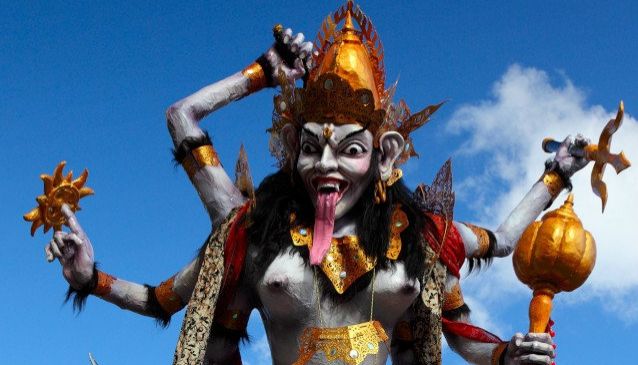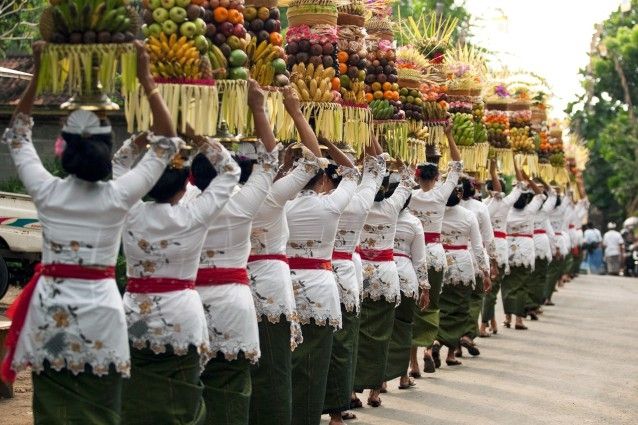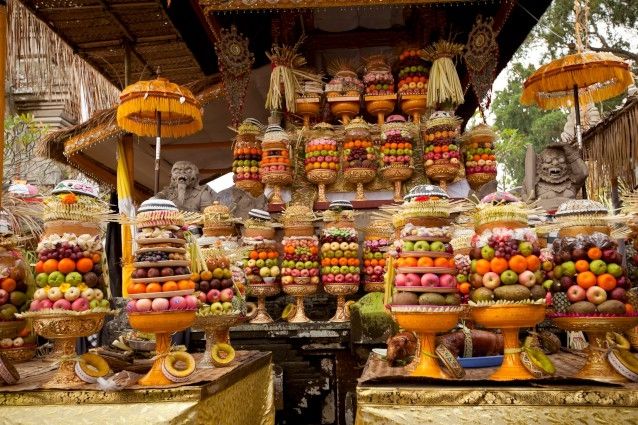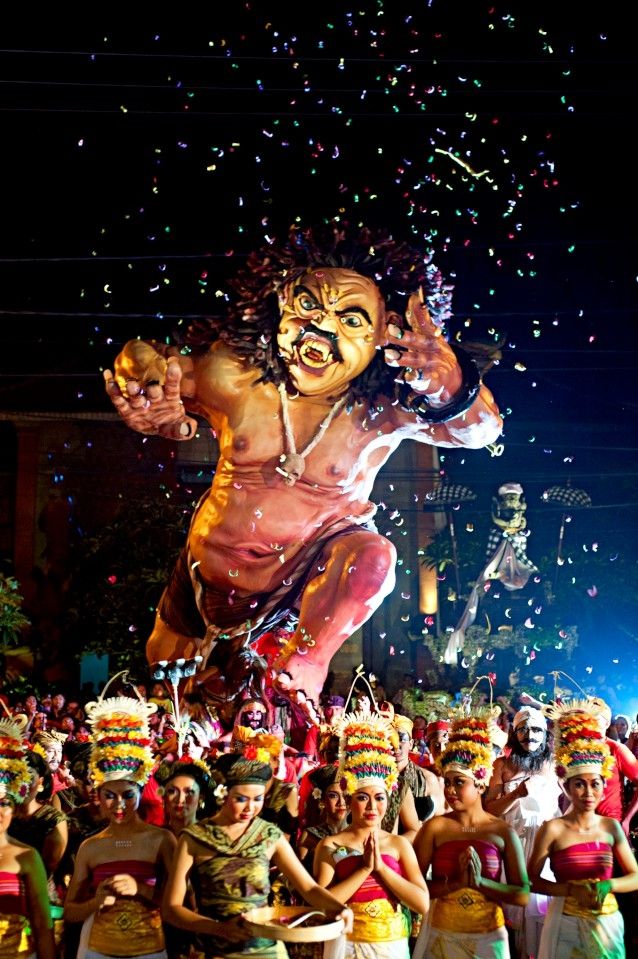Celebrating the New Year in the Balinese Hindu Calendar

Nyepi is as important for Lombok Hindus as it is for their co-religionists across the strait in Bali. It is New Year in the Balinese Hindu calendar. The day must be marked by abstinence, reflection and meditation, fasting, silence and no use of lighting or electric or other appliances. Physical work is not permitted.
The world knows that the island of Bali closes down for 24 hours – from 6am to 6am – and that even the airport is shut by government order. Tourists must stay in their hotels, where only limited services are available and lighting overnight is minimal. Only emergency vehicles are allowed on the roads along with those of traditional village guards, Pecalang, who enforce the silence.
It’s different in Lombok. Hindus observe Nyepi within their own homes and compounds. While the day is a national holiday observed throughout Indonesia, it’s basically business as usual in Lombok and across Indonesia except in Bali.
It’s for this reason that many non-Hindus from Bali head to Lombok for Nyepi, observed this year on March 31. There’s good reason to join them – and if you do, it’s a good idea to come early.
That way you won’t miss out on the highly animated and colourful tradition of the Ogoh-Ogoh parade, held in the evening of the day before Nyepi (March 30 this year). In modern Balinese practice this is the time for giant effigies of ogres representing bad spirits to be paraded through the streets and then burnt to dispel evil.

Balinese women with their offerings
In Bali these are seen everywhere and are organized by customary local precincts named banjars. But again, things are different in Lombok. A big annual Ogoh-Ogoh parade is staged in the city streets of Mataram. It’s fun to watch and the locals love it when guests join in.
It’s also an occasion for other communities to participate. Mataram’s 2013 parade included giant effigies presented by local Christian and Buddhist communities.
Some resort properties may organize their own smaller Ogoh-Ogoh parades, but if you can make it to Mataram’s big one you’ll have a lot of fun.
Last year on Nyepi eve Mataram’s Jalan Pejanggik was crowded with a lively procession of 170 Ogoh-Ogoh from Hindu communities in Mataram and West and Central Lombok. Some effigies are scary and even confronting; others are downright quirky. Putting them in a street parade of thousands of people creates an amazing spectacle.

Hindu Temple in Batu Layar
Ogoh-ogoh is a new development in Lombok where it is gaining momentum and tourist appeal and taking on a distinctive Lombok character. While it is a Hindu rite, Ogoh-Ogoh in Lombok includes ritual musical arts such as Rudat and Gendang Belek which are unique to Muslim Sasak Culture. The Sasak people are indigenous to Lombok.
In another departure from Balinese tradition, the Mataram effigies are not burnt immediately but are sent to villages as fire fuel.
Mataram’s Ogoh-Ogoh parade also underlines the cultural mix of the city, in which the Muslim, Hindu, Christian and Buddhist communities freely mix and interact. Harmony is something the city authorities are proud of and work to advance through shared acceptance of traditions.

Offerings
Opening the 2013 parade, Mataram Deputy Mayor Mohan Roliskana said the annual event attracted thousands of people including tourists from around Indonesia and overseas. “Mataram city residents live in harmony and peace, showing mutual respect for the followers of many religions,” he told the crowd.
The Ogoh-Ogoh parade is a recent development, in Bali dating from around 1980. It grew out of Pengrupukan, the ancient rite observed at sunset on the day before Nyepi, in which families parade around their homes or compounds carrying flaming torches and sounding kulkul (traditional bamboo bells) to chase away bad spirits.
In today’s Ogoh-Ogoh, giant effigies made of bamboo and papier-mâché, are usually burnt after the parade to symbolize the triumph of good over evil. Before the processions, a ceremony is performed to invite the spirit of evil (bhuta) to occupy the effigies.
According to Hindu belief, the ceremonies on Nyepi eve neutralize evil so that it remains in balance with good.
Balinese Hindu tradition uses a two-calendar system. One is called Pawukon, a 210-day cycle that is divided into 10 weeks. The other is Saka, a lunar calendar that originated in South India. It was brought to Indonesia around 465 CE.
One Saka year has 12 months and each month ends on a new moon. The calendar begins on the first day of the tenth lunar month or ends on the new moon of the ninth month. Nyepi is usually in March or April.
Saka is 78 years behind the Gregorian calendar – so at Nyepi this year, get ready to celebrate New Year 1936.

Ogah-ogah